Fundamentals of Full Stack & AI
Foundation of Web Development
React JS Frontend Framework
MERN Stack(Node, Express, MongoDB)
Core Python with Fast API
Full Stack Testing
Cloud & DevOps with Full Stack
GEN AI
Ai Agents & Applications
Realtime ClassRoom Training
Project and Task Based
6 to 8 Hrs Every Day
Interviews, Jobs and Placement Support
Communication Skills & Personality Development
Interview Preparations
50000 +
Students Enrolled
4.7 ![]()
(500)
Ratings
6 months
Duration

Why Full Stack with AI Training With Digital Edify?
Full Stack Engineer
Full Stack Architect
Technology Consultant ReactJs
Systems Engineer
System Administrator
₹ 8 LPA
Avg package
44 %
Avg hike
3000 +
Tech transitions
Annual Average Salaries
Demand

87%
Managers said hiring Java Training was top priority
Our Alumni Work at Top Companies





1
Learn
Learn from Curated Curriculums developed by Industry Experts
Full Stack with AI Course Curriculum
It stretches your mind, think better and create even better.
Topics:
What is AI?
AI is the ability of machines to perform tasks that require human intelligence, like learning, reasoning, and problem-solving.
How AI works
AI uses data, algorithms, and computing power to make predictions and automate tasks.
AI in everyday life
Virtual assistants (Open AI, Deepseek), recommendation systems (Netflix, YouTube), and chatbots.
Topics:
Application Overview
Understanding the significance and types of applications.
Web Application Fundamentals
Key components and basic concepts of web applications.
Web Technologies
Essential technologies and frameworks used in web application development.
Software Development Life Cycle (SDLC)
Phases and methodologies for effective software development.
Agile & Scrum
Principles, frameworks, and best practices for managing projects iteratively.
Topics:
What is data?
Information collected from different sources (text, images, videos, numbers).
Types of Data
Structured Data: Organized in tables (databases, spreadsheets).
Unstructured Data: Freeform content (videos, images, text, emails).
Semi-structured Data: A mix of both (JSON, XML).
Data Storage
Databases (SQL, NoSQL), cloud storage (AWS, Google Drive).
Data Analysis
Finding useful information in data to help make better decisions.
Data Engineering
Building systems and processes to collect, store, and process large datasets using tools like Hadoop and Spark.
Topics:
Processing Power for AI
AI needs strong computing resources to process large amounts of data.
Key Technologies
CPU (Central Processing Unit): General-purpose processor, used for basic AI tasks.
GPU (Graphics Processing Unit): Specialized for AI training and deep learning.
TPU (Tensor Processing Unit): Optimized for AI workloads (used by Google).
Edge Computing
Running AI on devices instead of the cloud (e.g., AI in mobile phones).
Cloud AI Platforms
Google Cloud AI, AWS AI, Microsoft Azure AI.
Topics:
CRM (Customer Relationship Management)
AI enhances customer interactions, automates responses, and provides predictive analytics for better decision-making.
Example: AI-powered chatbots in Salesforce CRM analyze customer inquiries and provide automated, intelligent responses, improving customer support efficiency.
HRMS (Human Resource Management System)
AI automates recruitment, employee engagement, and performance tracking.
Example: SAP SuccessFactors uses AI for resume screening, predicting employee attrition, and providing personalized training recommendations.
Education
LMS centralizes learning, automates course management, and tracks progress.
Example: LMS platforms.
Retail & E-Commerce
AI-driven tools assist in frontend optimization, automated testing, and predictive load balancing.
Example: Meta’s AI-powered React framework optimizes component rendering, enhances performance, and personalizes user interactions based on behavior.
Topics:
Introduction to HTML
The evolution and role of HTML in web development.
Understanding HTML syntax and the structure of documents.
Core HTML Elements
Detailed look at paragraphs, headings, links, images, and their attributes.
Structuring Web Content
Using lists and tables for data presentation.
The significance of semantic HTML for accessibility.
Enhancing Web Pages with Forms and Multimedia
Crafting forms for data collection with a variety of input types.
Basics of form validation and ensuring accessible form design.
Incorporating audio and video elements.
Embedding external resources with <iframe> and other tags.
Advanced HTML Features
Exploring semantic elements like <article>, <section>, and <nav>.
A brief overview of HTML5 APIs enhancing interactivity and web functionality.
Introduction to HTML templates, custom elements, and shadow DOM.
Accessibility and HTML Best Practices
Utilizing ARIA roles and proper HTML structure to support all users.
Importance of validating HTML code and adhering to web standards for cross-browser compatibility.
Performance, Security, and Staying Current
Techniques for optimizing web page loading times, such as image optimization and lazy loading.
Best practices for embedding content and managing user-generated content to prevent common security vulnerabilities.
Resources and strategies for staying updated with HTML developments and future trends.
Topics:
Foundations of CSS
History and evolution of CSS.
How CSS works with HTML to style webpages.
The role of the CSSOM (CSS Object Model) in web rendering.
Overview of CSS specifications and how to read the CSS documentation.
Applying CSS Styles
Comparison of External, Internal, and Inline Styles: Use cases and best practices.
Linking stylesheets and understanding the '<style>' tag.
The importance of CSS placement for performance and maintenance.
CSS Syntax
Detailed exploration of properties and values.
Writing well-structured CSS rules.
Understanding the universal selector (*) and its use cases.
Comments in CSS: Syntax and best practices for documentation.
Selectors and Combinators
Types of selectors: Class, ID, Attribute, Pseudo-class, and Pseudo-element selectors.
Combinators: Descendant, Child, Adjacent Sibling, and General Sibling.
Practical exercises: Using selectors to style complex layouts.
Styling and the Box Model
In-depth look at content, padding, border, and margin.
Box-sizing: border-box vs. content-box.
Visualizing the box model with browser developer tools.
Font families, web-safe fonts, and @font-face rule.
Text styling properties: weight, style, spacing, shadow.
Web typography best practices for readability and accessibility.
Absolute vs. Relative units: When and why to use each.
Color models in CSS: RGB, RGBA, HSL, HSLA, and Hexadecimal.
Implementing custom properties (CSS Variables) for theme management.
Specificity, Inheritance, and the Cascade
How CSS determines which rules apply: Specificity hierarchy.
Inheritance and how it affects styling.
The role of the cascade in resolving style conflicts.
Strategies to organize and structure CSS to minimize specificity conflicts.
Advanced Styling Techniques
Implementing box-shadow and text-shadow for depth and visual interest.
Using border-radius for rounded corners.
Gradient backgrounds: Linear and radial gradients.
Complex background images and patterns.
Controlling background size, position, and repetition.
Multi-layer backgrounds and their use cases.
Border images for intricate border designs.
Styling and animating outlines as focus indicators.
Layout Control with Overflow and Margin Collapsing
Controlling content overflow: scroll, hidden, and auto.
Understanding when and why margin collapsing occurs.
Strategies to prevent unwanted margin collapsing.
CSS Layouts and Positioning
In-depth exploration of block, inline, inline-block, none, and table.
Newer display values: flex, grid, and contents.
Detailed scenarios for using each positioning value.
Creating sticky headers and footers.
Overlaying content with absolute positioning.
The role of floats in CSS layout history.
Techniques for clearing floats: clearfix hack and overflow method.
When to use floats in modern CSS.
Techniques for managing content overflow in containers.
Design patterns for scrollable elements.
Responsive Design and Advanced CSS Features
Detailed guide to Flexbox: Properties for containers and items.
Grid Layout: Defining grid containers, grid items, and grid areas.
Use cases and practical examples: When to use Flexbox vs. Grid.
Media Queries: Syntax and breakpoints.
Mobile-first vs. Desktop-first strategies.
Responsive images and videos: Techniques for adaptive media.
Creating smooth transitions between states.
Keyframe animations: Building complex animations with @keyframes.
Performance considerations for CSS animations.
Implementing responsive typography.
Strategies for accessible, responsive forms.
Advanced layout patterns: Masonry, column-drop.
Topics:
Getting Started with Bootstrap
Introduction to Bootstrap.
Setting Up Bootstrap.
Using Bootstrap CDN.
Basic Grid System.
Containers, Rows, and Columns.
Bootstrap Layouts and Responsiveness
Responsive Classes.
Typography and Utilities.
Default Typography.
Text Alignment and Display Classes.
Spacing Utilities.
Navigation and Components in Bootstrap
Navigation.
Navbar Dropdowns within Navbar.
Alerts: Basic Alerts & Dismissible Alerts.
Badges.
Button Styles & Button Groups.
Advanced Bootstrap Components
Basic Card: Card Headers and Footers.
Image Overlays in Cards.
Form Controls, Form Groups, and Layout.
Validation Feedback.
Basic Modal Setup.
Carousel with Indicators and Controls.
Interactivity and Layout in Bootstrap
Tooltips and Popovers.
Flex Container and Items.
Direction, Order, and Alignment in Flex.
Visibility Classes.
Topics:
Core JavaScript Concepts
Variables, Data Types, Operators.
Functions, Parameters, Return Statements.
Function Expressions, Default Parameters, IIFE (Immediately Invoked Function Expressions).
JavaScript Functions and Scope, Anonymous Functions, Higher-Order Functions, Callback Functions, Arrow Functions, Closures.
Hoisting, Control Structures, Conditional Statements, Loops.
Arrays - Introduction and Methods, Object Methods, Spread/Rest Operators, Array and Object Destructuring.
String Methods, Date Methods, Template Literals.
Objects and Classes, Getters and Setters, Prototypes, Inheritance, Constructor Functions.
Advanced JavaScript Features
Exploring further into Functions and Scope beyond the basics.
Introduction To AJAX, Callbacks, Promises, Async/Await.
Execution Context and Scope Chain, Error Handling (try...catch).
Modules and Import/Export, Introduction to Regular Expressions.
Utilizing Web Storage APIs for storing data locally.
Working with the Document Object Model (DOM)
DOM Tree, Nodes, Manipulation.
Event Listeners & Event Delegation.
DOM Traversal, create Element, append Child, insert Before.
Asynchronous Programming and APIs
A comprehensive look into AJAX, Fetch API, Promises, and Async/Await.
Understanding Web APIs, Making HTTP requests using the Fetch API, Handling responses and working with JSON, Error handling with Fetch API.
Modern JavaScript Development
A deeper exploration of JavaScript's functional programming aspects.
Advanced techniques for managing errors and utilizing regular expressions for data validation.
Leveraging modules for efficient code organization and reusability.
Strategies for using Local Storage & Session Storage to enhance user experience.
Topics:
Introduction to TypeScript and its Fundamentals
What is TypeScript?
Benefits of using TypeScript.
Setting up the TypeScript environment.
Introduction to the TypeScript Compiler.
Variables in TypeScript.
Basic and Complex Data Types.
Type Inference and Type Compatibility.
Diving Deeper into TypeScript Types
Enums and their uses.
Advanced Types: Union, Intersection, Conditional Types.
Iterators and Generators.
Object-Oriented Programming with TypeScript
Introduction to Object-Oriented Programming concepts.
Classes and Objects.
Inheritance: Extending Classes.
Polymorphism: Method Overriding.
Leveraging Interfaces and Abstract Classes in TypeScript
Understanding Interfaces.
Applying Interfaces to Classes.
Abstract Classes and their application.
Differentiating Interfaces from Abstract Classes.
Code Organization with Modules and Namespaces
Organizing code with Namespaces.
Modules in TypeScript.
Importing and Exporting Modules.
Topics:
Getting Started with React
Introduction to React and its significance in modern web development.
Setting up a React development environment.
ES6 for React
Essential ES6 features for React development: Arrow Functions, Let and Const, Template Literals.
Advanced ES6 features: Destructuring, Spread/Rest Operators, ES6 Modules, Promises, Async/Await.
Functional Components and JSX
Understanding functional components and JSX syntax.
Benefits of functional components over class components.
Topics:
React Components and JSX Deep Dive
JSX syntax nuances, embedding expressions, and creating functional components.
State and Props in React
Managing component state with useState.
Understanding and using props for parent-child communication.
React Hooks for Component Lifecycle
Introduction to useEffect for side effects in functional components.
Topics:
Advanced Hooks and State Management
Exploring useContext, useReducer for global state management and performance optimizations with useCallback, useMemo.
Styling and Data Fetching
Approaches to styling: CSS Modules, Styled Components.
Fetching data from APIs using useEffect and Axios.
Topics:
Routing in React Applications
Implementing single-page applications with React Router.
Form Handling in React
Strategies for building and managing forms efficiently.
Global State Management with Redux
Basics of Redux for global state management in large-scale applications.
Topics:
Optimizing React Applications
Techniques like code splitting, lazy loading with React Suspense.
Testing React Components
Unit testing strategies using Jest and React Testing Library.
React Best Practices
Code organization, performance optimization strategies, and maintaining coding standards.
Topics:
Foundations of Node.js
Introduction to Node.js, its architecture, setup, and the Node.js ecosystem.
JavaScript and ES6+ for Node.js
Covering JavaScript basics and ES6+ features essential for Node.js development.
Node.js Runtime Deep Dive
Exploring the event loop, non-blocking I/O, and built-in modules crucial for Node.js applications.
Topics:
Express.js Fundamentals
Setting up an Express server, routing, middleware, and serving static files.
Data Handling in Node.js
JSON data handling, file system operations, and basics of integrating SQL and NoSQL databases.
Topics:
RESTful API Development
Designing and implementing RESTful APIs, documentation, and testing strategies.
Securing Node.js Applications
Authentication methods, implementing JWT and OAuth, and security best practices.
Topics:
Advanced Asynchronous Patterns and Real-Time Communication
Utilizing advanced asynchronous patterns, WebSockets for real-time communication.
Node.js Application Security and Performance
Enhancing application security, deployment strategies, and performance optimization.
Topics:
MongoDB Basics and CRUD Operations
Introduction to MongoDB, basic operations, CRUD operations, and understanding ObjectIds and Indexes.
Aggregation and Data Modeling in MongoDB
Utilizing MongoDB's aggregation capabilities and strategies for effective data modeling.
Integrating MongoDB with Node.js
Establishing connections using MongoClient and Mongoose, conducting database operations, and optimizing CRUD operations in a Node.js environment.
Topics:
Why Python?
Simplicity, Libraries, Community Support.
Setting up Python
Anaconda, Jupyter Notebook, VS Code.
Topics:
Data Types
int, float, string, list, tuple, dict.
Control Structures
if-else, loops.
Functions & Modules
Functions and reusable code organization.
File Handling
Reading and writing files in Python.
Topics:
Classes & Objects
Defining and using classes and objects.
Inheritance & Polymorphism
Reusing and extending class functionality.
Encapsulation & Abstraction
Data hiding and simplifying complex systems.
How OOP is used in AI
e.g., Model Classes in TensorFlow/PyTorch.
Topics:
NumPy
Arrays & Numerical Computation.
Pandas
Data Manipulation & Analysis.
Matplotlib & Seaborn
Data Visualization.
Topics:
Reading/Writing Data
CSV, Excel, JSON.
Handling Missing Data
Techniques to address incomplete datasets.
Data Cleaning & Transformation
Preparing data for analysis and modeling.
Topics:
Why FastAPI?
Speed, Asynchronous Support, Auto-Documentation, Community Support.
Setting up FastAPI
Installing FastAPI, Uvicorn, and Virtual Environments.
FastAPI vs Other Frameworks
Flask, Django, Express.
Topics:
Request & Response Models
Pydantic for Data Validation.
Path & Query Parameters
Handling URL parameters.
Dependency Injection
Managing dependencies in FastAPI.
Middleware & Background Tasks
Enhancing API functionality.
Topics:
Using Classes for API Services
Structuring APIs with classes.
Dependency Injection with Classes
Using OOP for dependency management.
Encapsulation & Abstraction for API Logic
Simplifying and securing API logic.
How OOP is used in AI APIs
e.g., Serving ML Models with FastAPI.
Topics:
SQLAlchemy
ORM for Database Management.
Pydantic
Data Validation & Serialization.
Tortoise-ORM
Async Database Handling.
Jinja2
Templating in FastAPI.
Topics:
Handling JSON & Form Data
Processing API inputs.
Request & Response Data Validation
Ensuring data integrity.
Connecting FastAPI with Databases
PostgreSQL, MongoDB, SQLite.
Data Serialization & Transformation
Preparing data for API responses.
Topics:
WebSockets for Real-time Communication
Enabling real-time API interactions.
Authentication & Authorization
OAuth2, JWT, API Keys.
CORS, Rate Limiting, and Security Best Practices
Securing APIs.
Background Tasks & Asynchronous Processing
Handling long-running tasks.
Topics:
Deploying FastAPI with Docker & Kubernetes
Containerizing APIs.
Using Cloud Services
AWS, GCP, Azure for FastAPI.
Performance Optimization & Monitoring
Ensuring API efficiency.
CI/CD Integration for FastAPI Projects
Automating deployment pipelines.
Topics:
Understanding Software Testing
Purpose, Importance, and Role in SDLC.
Manual Testing
Definition, Advantages, and When to Use.
Types of Applications
Web, Mobile, and Desktop.
Characteristics of a Quality Application
Usability, Performance, and Security.
Objectives of Testing
Defect Prevention, Reliability, and Compliance.
Software Development Models
Waterfall Model (Phases, Pros & Cons).
Agile Model (Scrum, Kanban, CI/CD).
Topics:
Testing Methodologies
Black Box Testing (Functional, Non-Functional).
White Box Testing (Code-Level Testing, Path Coverage).
Gray Box Testing (Combination Approach).
Types of Testing
Functional Testing (Unit, Integration, System, UAT).
Non-Functional Testing (Performance, Security, Usability).
Levels of Testing
Unit Testing, Integration Testing, System Testing, and UAT.
Defect Management & Bug Lifecycle
Defect Life Cycle (Open, Assigned, Fixed, Retested, Closed).
Defect Logging & Tracking (Jira, Bugzilla).
Severity vs Priority (Impact vs Urgency).
Topics:
Test Design Techniques
Loop Coverage, Equivalence Partitioning, Boundary Value Analysis.
Exploratory & Ad-hoc Testing.
Software Testing Life Cycle (STLC)
Test Planning, Test Case Development, Test Execution, Defect Reporting, and Closure.
Best Practices in Testing
Writing Effective Test Cases & Scenarios (Clarity, Reproducibility).
Introduction to Automation Testing with Playwright
What is Playwright? Features, Advantages Over Selenium & Cypress.
Playwright Architecture & Auto-Waiting Mechanism.
Installing & Writing the First Test.
Locators, Element Interactions, and Handling Dynamic Elements.
Debugging Playwright Tests (Tracing, Screenshots, Videos).
Topics:
Introduction to API Testing
REST, SOAP, GraphQL.
Core API Testing Concepts
HTTP Methods, Status Codes, Authentication (OAuth, JWT).
Query Parameters, Headers, and Response Validation.
Automating API Testing with Python & Pytest
Writing API Tests using `requests`, `httpx`.
Mocking API Responses (`responses`, `pytest-mock`).
API Contract Testing (JSON Schema Validation).
Advanced API Testing
Capturing & Mocking API Calls using Playwright.
Rate Limiting & Throttling in API Testing.
Performance Testing APIs (Load & Stress Testing with Locust).
Topics:
Test Metrics & Reporting
Test Case Effectiveness, Defect Density, Formula-Based Calculations.
Quality Assurance vs Quality Control
Key Differences, Proactive vs Reactive Approach.
Test Management & Tools
Popular Test Management Tools (TestRail, Zephyr, qTest).
Integrating Test Management with CI/CD.
Advanced Playwright Automation Framework
Running Tests in Parallel (`pytest-playwright`).
Implementing Page Object Model (POM).
Data-Driven Testing (CSV, JSON, Excel).
File Handling: Uploads, Downloads, and File-Based Testing.
Topics:
Cloud Computing Basics
Understanding cloud computing: Definitions, service models (IaaS, PaaS, SaaS), and deployment models (public, private, hybrid, multicloud).
Cloud Service Providers Overview
Introduction to major cloud platforms (e.g., AWS, Azure, Google Cloud), focusing on their core services relevant to developers.
Cloud-based Development Environments
Setting up and utilizing cloud-based IDEs and development tools to streamline development workflows.
Deploying Applications on the Cloud
Basic concepts of application deployment on the cloud, including containerization basics with Docker and initial orchestration concepts.
Topics:
Understanding DevOps
The philosophy, practices, and benefits of DevOps in modern software development, emphasizing collaboration, automation, and integration.
Version Control with Git
Deep dive into using Git for source code management, including best practices for branches, commits, merges, and pull requests.
Continuous Integration/Continuous Deployment (CI/CD)
Introduction to CI/CD pipelines, overview of tools (GitHub Actions), and setting up basic pipelines for automated testing and deployment.
Monitoring and Feedback
Basics of application monitoring, log management, and utilizing feedback for continuous improvement.
Topics:
Containers and Docker
Introduction to containers, Docker fundamentals, creating Docker images, and container management basics.
Configuration Management Tools
Overview of tools like Ansible and Chef for automating the configuration of servers and environments.
Managing Application Infrastructure
Basic strategies for managing infrastructure as part of the application lifecycle, including introduction to infrastructure as code (IaC) principles.
Serverless Computing Concepts
Understanding serverless computing and its implications for full stack development, including FaaS (Function as a Service) basics.
Topics:
Scalable Application Design
Principles of designing scalable applications that can grow with user demand, focusing on microservices architecture and stateless application design.
Databases in the Cloud
Overview of cloud database services (SQL and NoSQL) and integrating them into web applications.
Security Basics in Cloud and DevOps
Understanding security best practices in cloud environments and throughout the DevOps pipeline.
Topics:
What is Generative AI?
Overview of generative AI concepts.
Key Applications
Text (Chatbots, Content Generation).
Image (DALL·E, MidJourney).
Audio (Music Generation, Voice Synthesis).
Code (Cursor, Copilot).
Evolution of GenAI
From Rule-Based Systems to Deep Learning.
Comparison of Generative Models (GANs, VAEs, LLMs).
Challenges in GenAI
Bias, Hallucinations, Ethical Considerations.
Topics:
What is Prompt Engineering?
Crafting inputs for AI models.
Importance of Effective Prompt Design
Improving model outputs.
Basic Prompting Techniques
Instruction-Based Prompts.
Few-Shot & Zero-Shot Learning.
Advanced Prompt Engineering
Chain-of-Thought (CoT) Prompting.
Self-Consistency & Iterative Refinement.
Structured vs. Unstructured Prompts.
Experimenting with LLMs
Using GPT-4, Claude, or LLaMA.
Topics:
Transformers & LLMs
Why Transformers? (Limitations of RNNs & LSTMs).
Key Components: Self-Attention Mechanism, Multi-Head Attention, Encoder-Decoder Architecture.
Evolution of Transformers
From BERT to GPT, T5, and Beyond.
Large Language Models (LLMs)
What are LLMs?
Pre Training vs. Fine-Tuning.
Popular LLM Architectures: GPT (OpenAI GPT-4,O3), DeepSeek, BERT (Contextual Embeddings), T5 (Text-to-Text Models).
Challenges in LLMs
Bias & Ethical Issues, Scalability & Cost, Model Hallucinations.
Generative Adversarial Networks (GANs)
What are GANs?
How GANs Work: Generator & Discriminator.
Applications of GANs (DeepFake, Image Generation, Super-Resolution).
Autoencoders & Variational Autoencoders (VAEs)
What are Autoencoders?
Difference Between Autoencoders & VAEs.
Applications (Data Denoising, Anomaly Detection).
Lightweight Models (LIMs)
What are Lightweight AI Models?
Difference Between LIMs & LLMs.
Use Cases of LIMs in Edge AI.
Topics:
LangChain
What is LangChain.
Building Modular LLM Workflows.
Practical Applications.
Hugging Face
Overview of Hugging Face Transformers & Datasets.
How to Fine-Tune & Deploy Models.
Vector Databases & Retrieval-Augmented Generation (RAG)
Introduction to Vector Databases (Pinecone, Weaviate, FAISS).
Understanding RAG and Its Role in GenAI.
Topics:
What are AI Agents?
Overview of AI agents.
Difference Between AI Agents and Traditional AI Systems
Comparing agent-based and traditional AI.
Key Characteristics
Autonomy.
Goal-Oriented Behavior.
Tool Usage & Execution.
Real-World Applications of AI Agents
Examples of AI agent use cases.
Topics:
CrewAI
Overview: How CrewAI enables multi-agent workflows.
Components: Roles, Tasks, Tools, Memory.
Use Case: Automating research and content generation.
N8N
What is N8N?
Connecting AI Agents with APIs and automation.
Use Case: AI-driven task execution with n8n.
Langflow
Introduction to Langflow.
Building AI Agent workflows with a drag-and-drop interface.
Use Case: Rapid prototyping and deployment of AI Agents.
Topics:
Creating AI Agents
Using CrewAI + Lang Flow.
Automating tasks
With CrewAI + N8N.
Multi-agent collaboration
For business workflows.
TOOlS & PLATFORMS


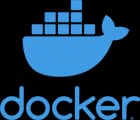


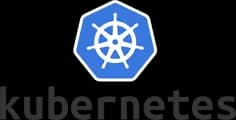









Our Trending Courses
Our Trending Programs
2
Build
Work on our Real-time Projects , Task Based
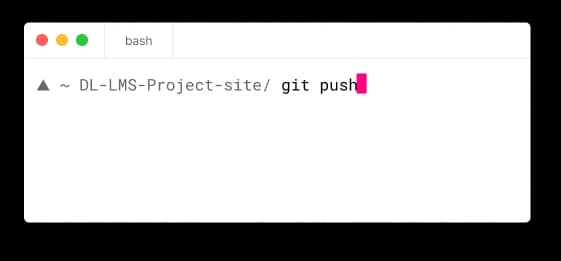
An LMS project develops a digital platform for online learning,featuring course creation, content management, user tracking,assessments, and reporting, aimed at enhancing educational interaction.
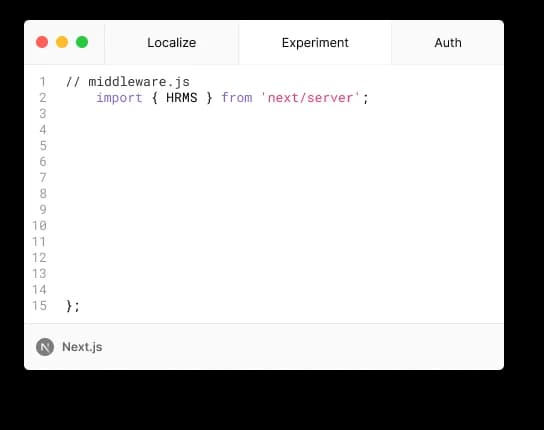
The HRMS project develops a digital system for managing HR functions like employee data, payroll, recruitment, and performance, aiming to streamline processes and enhance organizational efficiency.
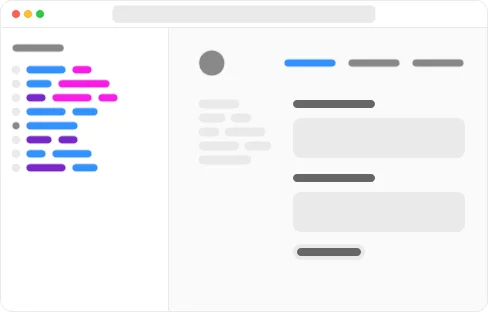
A CRM project develops a system to manage company interactions with customers, incorporating tools for contact, sales, productivity, and support to enhance service, drive sales, and boost retention.
3
Get Certification
Internships and Course certifications for Enhanced Skill Validation.
Internship Certificate
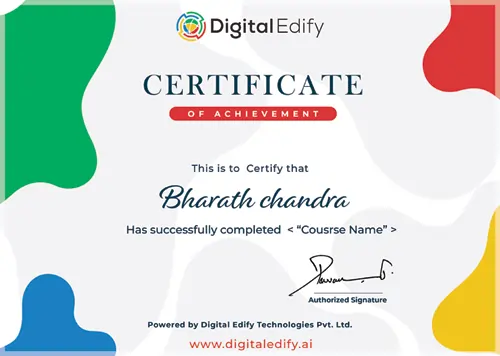
Course Completion Certificate

4
Get Job
Our focus on job-readiness Github Profile, Linkedin Profile, Resume Prep and Help Apply
GitHub Profile
Guidance on creating and maintaining a professional GitHub profile to showcase technical projects and coding prowess.
LinkedIn Profile
Assistance in crafting a compelling LinkedIn profile for networking and visibility among recruiters.
Resume Preparation
Expert advice on resume writing to effectively highlight skills, experience, and achievements.
Help in Applying
Support in identifying suitable job opportunities and navigating the application process.
IT Engineers who got Trained from Digital Edify




Upcoming Batch Schedule
3rd Nov 2025
Monday
8 AM (IST)
1hr-1:30hr / Per Session
29th Oct 2025
Wednesday
10 AM (IST)
1hr-1:30hr / Per Session
31st Oct 2025
Friday
12 PM (IST)
1hr-1:30hr / Per Session
Can’t find a batch you were looking for?
LEARNERS
BATCHES
YEARS
SUPPORT
100000+ uplifted through our hybrid classroom & online training, enriched by real-time projects and job support.
Come and chat with us about your goals over a cup of coffee.
2nd Floor, Hitech City Rd, Above Domino's, opp. Cyber Towers, Jai Hind Enclave, Hyderabad, Telangana.
3rd Floor, Site No 1&2 Saroj Square, Whitefield Main Road, Munnekollal Village Post, Marathahalli, Bengaluru, Karnataka.